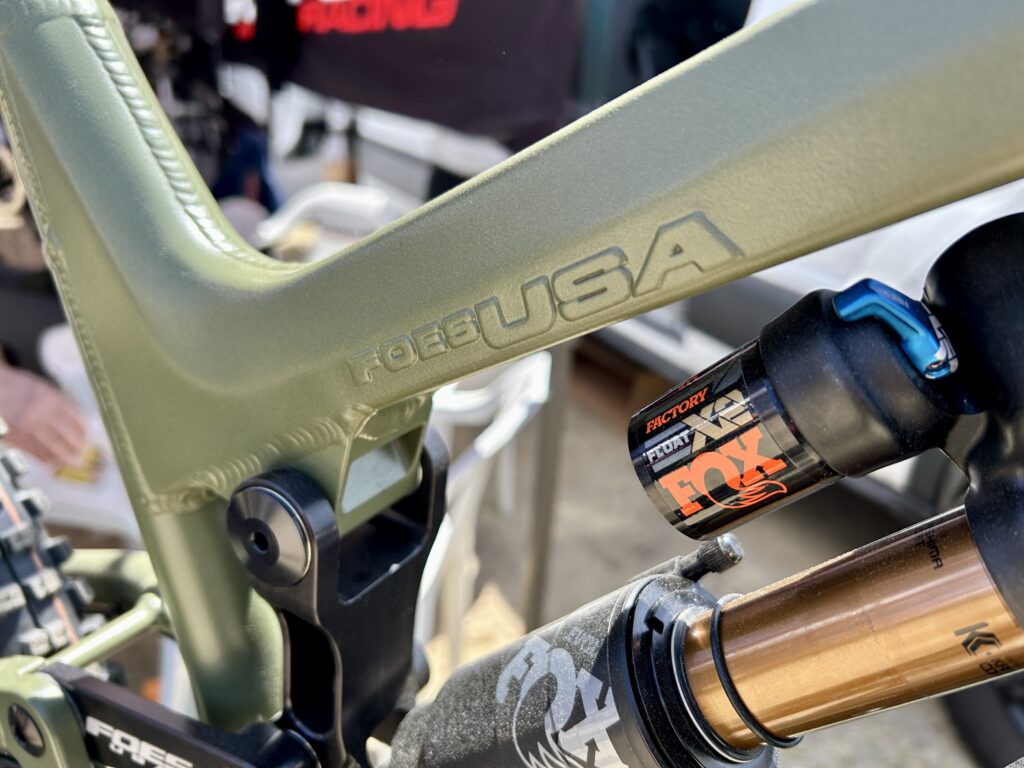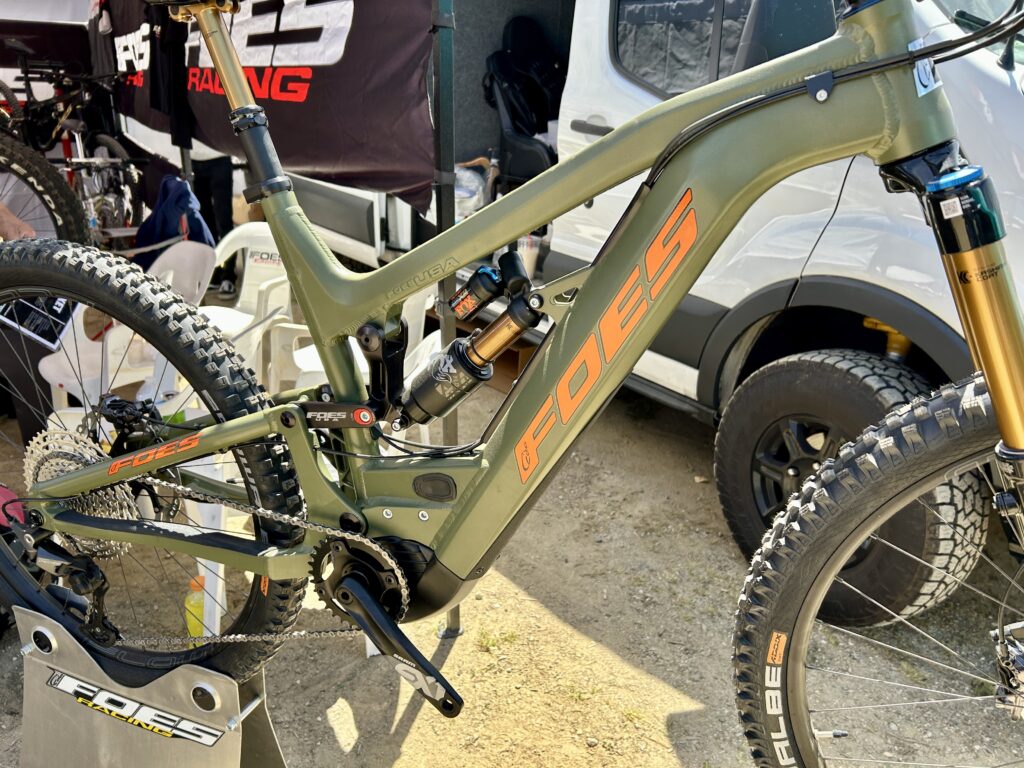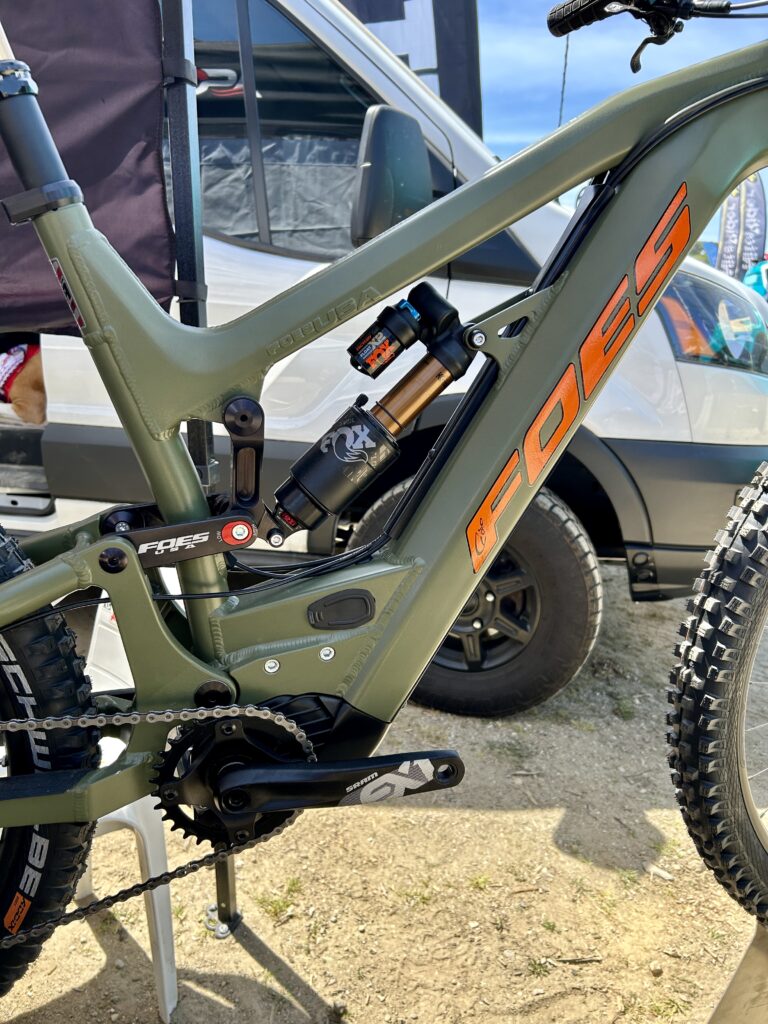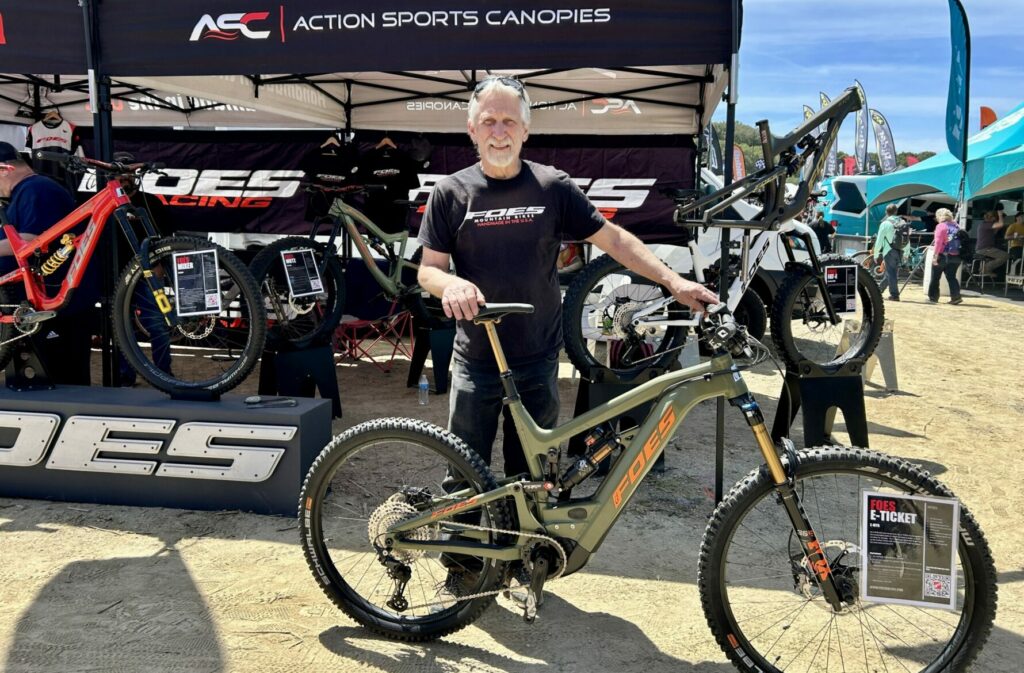As far as I can tell, Brent Foes is unique in the realm of e-bike manufacturers. Foes appears to be the only company offering a made-in-USA production e-MTB frame for proper mountain bike riding, the E-Ticket. If you’re familiar with the Foes story, this should come as no surprise.
In 1992, Foes produced the futuristic LTS, a monocoque aluminum frame with six inches of travel, paired to a bespoke Foes F1 fork. With his experience riding pro motocross for a decade, building Baja race trucks for Nissan, and fabricating all manner of parts and vehicles in his machine shop in Southern California, his innovative approach comes as no surprise.
“I think the evolution of e-bikes is traveling a lot faster than when they started putting suspension on bikes,” he said at Sea Otter while explaining the finer points of the E-Ticket. “It’s being accepted a lot quicker by the industry.”
Today, e-bikes might not be as novel as a long-travel full-suspension bike was in the early ‘90s. But Foes is applying the same forward-thinking approach to the category while still building bikes in America. That is no small feat given the myriad design challenges presented by the new technology.

Mean, Lean U.S. Fabrication
Other than heat-treatment and paint, the E-Ticket frame is made entirely in the Foes headquarters in San Dimas, as are all of the company’s frames.
Typically, Foes will build batches of 10-15 frames in each size (S, M, L, XL). It takes approximately a month for four builders to machine all of the necessary parts and weld the chassis together to accept the Bosch CX Performance motor and battery.
“The fun part for me is there’s really nobody making an American-made e-bike,” Foes said. “We’re making everything right here, other than the components. For people that want an American-made product, we make it. I like to keep it real mean and lean!”
The E-Ticket shares a lot of the design philosophy of conventional Foes bikes, such as the single-pivot suspension design. However, the frame has to be designed around the motor and battery.
“I was able to get my pivot point closer to where I wanted it, in relationship to the chainring with the Bosch motor,” said Foes. This improved the axle path and reduced chain growth through the suspension travel.
“I predict that the rear derailleur and all the gears are eventually gonna be mounted in the front, with the motor and everything. So it’s all one piece.”
— Brent Foes
To mount the motor, Foes had to machine a cradle out of a billet piece of aluminum using a new five-axis milling machine.
One constraint of the all-aluminum frame is that the motor has to be removed to swap the entire battery. “The way we’ve designed this eliminates a big gaping hole in the frame, said Foes. “So it makes it a lot stronger. When you cut a hole into the frame, the torsional stiffness goes away.”
To mount the battery in the down tube, Foes fabricated a custom metal spine and bracket. The size small E-Ticket runs a 500wh battery, while other sizes can fit either 625 or 700wh units.

Proven Chassis Design
Beyond the specifics of accommodating a drive unit and battery, Foes stuck to practical, proven details on the E-Ticket, a reflection of his philosophy to design and build reliable bikes.
As mentioned earlier, the suspension design is the same as all Foes mountain bikes, a single pivot with a slight rising rate at 2.4:1 leverage. The E-Ticket offers 160mm of travel with a flip-chip to adjust head tube angle from 64.5 degrees to 65.5 degrees. The steeper setting raises the bottom bracket by .375”.
Foes was one of the early adopters of the “mullet” wheel configuration — a 27.5” rear wheel and 29” front. The E-Ticket is no different. In fact, we’re starting to see a lot of e-MTBs come with this set-up. There is also a Fat E-Ticket with ultra-wide 26” tires available.
“A lot of people are saying, well, certain things are fads, and it won’t last, but this is gonna be the normal configuration,” said Foes. “The axle is a little higher in the front than the back, so it makes the front end feel a little lighter. You get a stiffer, more compact rear too.”

Predicting the Future
Of course, given Foes’s decades of experience with design and fabrication of all wheeled things, we had to ask about his vision for the future of e-mountain bikes. He did not disappoint with a pretty radical vision of how things could improve.
“I predict that the rear derailleur and all the gears are eventually gonna be mounted in the front, with the motor and everything,” said the Mountain Bike Hall of Fame member. “So it’s all one piece. And you’re just going to have a heavier chain, because right now, when you’re riding these e-bikes, and you’re shifting it through the power, you can really hear the stress on the chain.”
It’s hard to tell how long it will be until we have integrated drive units and shifting. But like most people in the industry, Foes agrees that the e-bike technology is bound to continue proliferating as motors and batteries improve and get smaller.
“It’s moving real fast,” he added, “and the e-bike market is not going away anywhere soon.”
